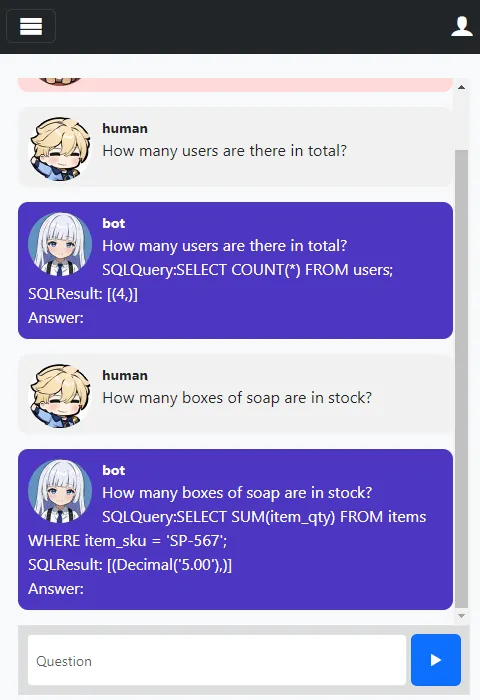Storage Boxx is an open-source PHP Inventory Management System. With a built-in webcam QR scanner, NFC scanner, passwordless login, and an optional experimental AI assistant.
TABLE OF CONTENTS
DOWNLOAD & INSTALLATION
First, here are the download links for the impatient folks who don’t want to read through everything.
SYSTEM REQUIREMENTS
- LAMP/WAMP/MAMP/XAMPP
- Apache Mod Rewrite
- PHP MYSQL PDO Extension
- PHP OpenSSL Extension
- At least PHP 8.0
- Take note – Webcam, NFC and Passwordless (Web Authentication) support depends on the user’s device and browser.
LICENSE & DOWNLOAD
GitHub | GitHub – AI Assistant | SourceForge
Storage Boxx is released under the MIT License. You are free to use it for personal and commercial projects, and modify it as you see fit. On the condition that the software is provided “as-is”. There are no warranties provided and “no strings attached”. Code Boxx and the authors are not liable for any claims, damages, or liabilities.
INSTALLATION
- Download from GitHub/Sourceforge into your HTTP folder.
- Access
http://your-site.comin the browser and walk through the installer.
SORRY FOR THE ADS...
But someone has to pay the bills, and sponsors are paying for it. I insist on not turning Code Boxx into a "paid scripts" business, and I don't "block people with Adblock". Every little bit of support helps.
Buy Me A Coffee Code Boxx eBooks
HOW TO USE
So far so good? Let us now go through a quick crash course on how to use Storage Boxx.
QUICKSTART GUIDE
EQUIPMENT RECOMMENDATIONS
- Webcam – If you are using a desktop without a webcam, a simple one only costs about $20~30.
- USB QR Code scanner – Alternatively, a “dedicated barcode scanner” will cost about $30~40 bucks.
- NFC tags – 10 pieces of Ntag213 only cost 2-3 bucks. Buy them in bulk, and one piece will only cost a few cents.
- Fingerprint sensors – These are kind of expensive… But I got lucky with a $25 “Made in China” that works just fine.
- Label printer – Print your QR codes. There are Bluetooth ones that can pair with smartphones.
FOR THE DEVELOPERS
This section is for the developers, with a couple of development notes for customization.
FAQ
“AJAX error”? Migrating to another domain? NFC “not working”? Check out the FAQ section.
BUILT ON CORE BOXX
- At least go through the very short tutorial.
- Thereafter, go into the deeper concepts:
- Storage Boxx has also adopted the following modules:
AI ASSISTANT
So, you may have noticed that the AI Assistant is “missing” or “not working” out of the box. It’s a long story.

REQUIREMENTS
- Python – Yes, Python. Not PHP. Version 3.9 to 3.10 seems to work fine at the time of writing.
- Microsoft C++ Build Tools
- CMake
- Nvidia CUDA Toolkit – If you have an Nvidia graphics card.
- An Nvidia graphics card with at least 8GB VRAM is highly recommended. You can TRY to run on CPU, but it is painfully slow and practically useless.
INSTALLATION
- Copy/unzip this module into your existing Storage Boxx folder.
- I have tried multiple AI models, codellama-7b-instruct.Q5_K_M.gguf is the only one that produced decent(ish) results – Download that into
chatbot/modelsor choose a better/larger/smarter model on your own. - Edit
chatbot/a_settings.py, change themodel_nameto your own. - BE WARNED, GIGABYTES WORTH OF DOWNLOAD! –
0-setup.bat(Windows)0-setup.sh(Linux).
LAUNCH
- Run
1-bot.bat(Windows)1-bot.sh(Linux/Mac), this will deploy the bot athttp://your-site.com:8008. - Just access
http://your-site.com/ai(must be signed in).

According to Installation guide on github, it’s not working
{“status”:0,”message”:”Unable to create the key”,”data”:{“code”:0,”file”:”C:\\xampp\\htdocs\\stock\\lib\\webpush\\web-token\\jwt-core\\Util\\ECKey.php”,”line”:98,”trace”:”#0 C:\\xampp\\htdocs\\stock\\lib\\webpush\\web-token\\jwt-core\\Util\\ECKey.php(72): Jose\\Component\\Core\\Util\\ECKey::createECKeyUsingOpenSSL(‘P-256’)\n#1 C:\\xampp\\htdocs\\stock\\lib\\webpush\\web-token\\jwt-key-mgmt\\JWKFactory.php(69): Jose\\Component\\Core\\Util\\ECKey::createECKey(‘P-256’, Array)\n#2 C:\\xampp\\htdocs\\stock\\lib\\webpush\\minishlink\\web-push\\src\\VAPID.php(165): Jose\\Component\\KeyManagement\\JWKFactory::createECKey(‘P-256’)\n#3 C:\\xampp\\htdocs\\stock\\lib\\CORE-Install-HTML.php(14): Minishlink\\WebPush\\VAPID::createVapidKeys()\n#4 C:\\xampp\\htdocs\\stock\\lib\\LIB-Install.php(90): require(‘C:\\\\xampp\\\\htdocs…’)\n#5 C:\\xampp\\htdocs\\stock\\lib\\CORE-Install.php(13): Install->D()\n#6 C:\\xampp\\htdocs\\stock\\index.php(2): require(‘C:\\\\xampp\\\\htdocs…’)\n#7 {main}”},”more”:null,”page”:null}
And While creating the init.php file it shows following error
{“status”:0,”message”:”Call to a member function init() on null”,”data”:{“code”:0,”file”:”C:\\xampp\\htdocs\\stock\\init.php”,”line”:4,”trace”:”#0 {main}”},”more”:null,”page”:null}
1) Quick fix for
Call to a member function init() on null– Just add$_CORE->load("Route");.2) As for “unable to create key”, it is originating from the web push library – https://github.com/web-push-libs/web-push-php
3) You can try to update it. Delete
lib/webpush–composer require minishlink/web-push– Renamevendortolib/webpush.4) Otherwise, I cannot replicate the error on my server. It is most likely an OpenSSL issue on your end.
5) See https://code-boxx.com/core-boxx-php-framework/#sec-faq “Unable to generate VAPID keys”.
It’s working now.. without changing or editing anything.. I just download the latest Version and added OPENSSL path and it worked.
THANKS !!!
Receiving this error:
{“status”:0,”message”:”Unable to create the key”,”data”:{“code”:0,”file”
DB is created succesfully, Apache Mod Rewrite, PHP MYSQL PDO Extension, PHP OpenSSL Extension and PHP 8.0 are ok.
Can you give me a hand pleasee
Sorry, can’t help much with a quarter error message. As far as I can remember, it can be any one of these keys:
1) lib/CORE-Config.php – Push Notification. See https://code-boxx.com/core-boxx-php-framework/#sec-faq “UNABLE TO GENERATE PUSH NOTIFICATION VAPID KEYS”
2) lib/CORE-Config.php – JWT_SECRET. Unlikely, you can put in any random string as the JWT secret key.
3) lib/JWT – Compatibility issues with PHP-JWT library – https://github.com/firebase/php-jwt. Can’t help much. You can try to run the example snippet on their Github page and see if the library throw errors.
4) lib/webpush – https://github.com/web-push-libs/web-push-php.
5) Database tables – Manually create another dummy database and import SQL-Storage-Boxx-0.sql. See if MYSQL throw errors.
i have cpanel and i success instalation, but still bad server response
AJAX ERROR
Bad server response
See https://code-boxx.com/core-boxx-php-framework/#sec-faq “AJAX Error And Bad Server Response”